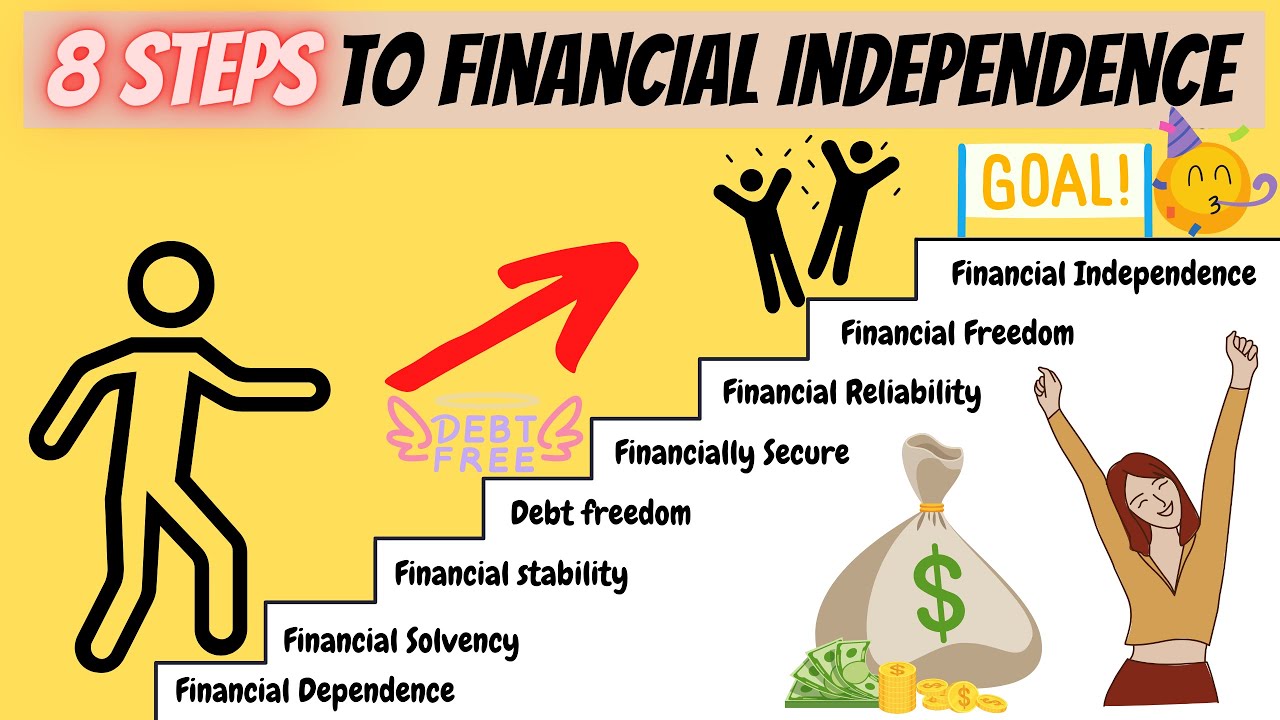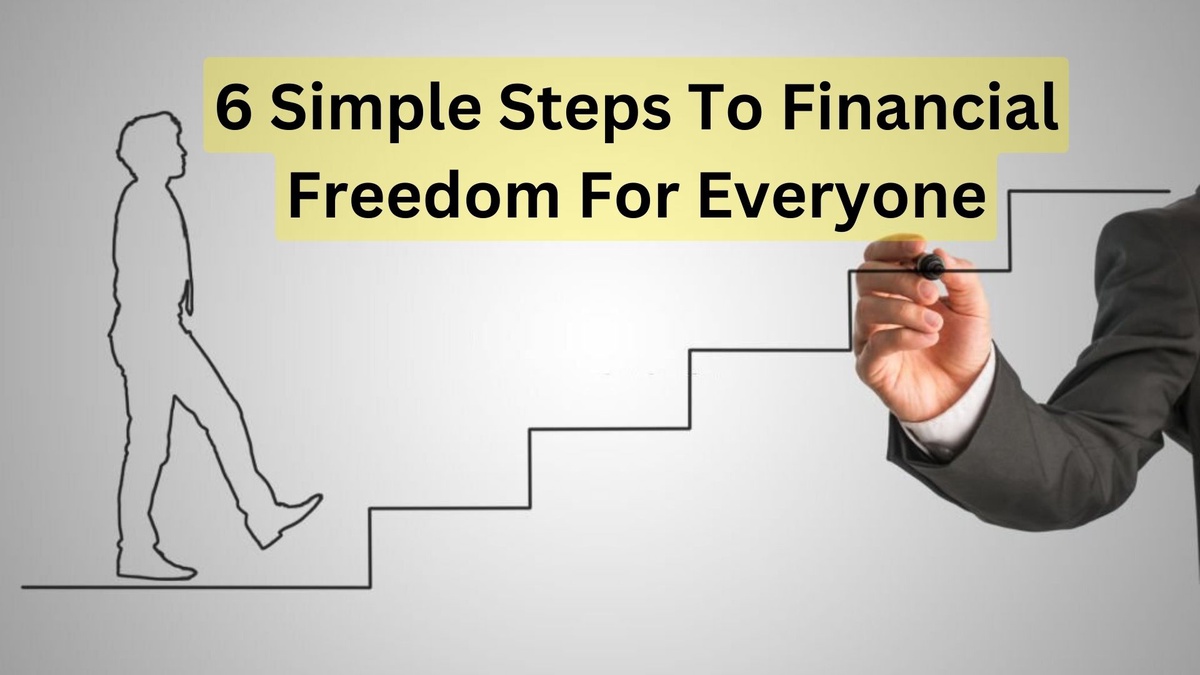Being financially independent is a dream for many people, but the thought of achieving it can seem daunting. But what if we told you that it doesn't have to be complicated or expensive? In this article, we'll explore six simple steps that everyone can take to achieve financial freedom.
Introduction to Financial Freedom
Almost everyone wants to be financially free, but very few people actually are. Why is this? Because financial freedom takes work, dedication, and most importantly, knowledge. A lot of people are not taught about money and how to manage it properly. As a result, they make poor financial decisions that keep them stuck in a cycle of debt and never-ending bills. If you want to be financially free, you need to educate yourself about money. You need to understand how money works and how to use it to your advantage. Only then will you be able to make the smart financial decisions that will lead you to financial freedom. In this section, we'll cover the basics of financial freedom and give you the knowledge you need to start your journey toward a life of financial independence.

Step 1: Set a Realistic Financial Goal
In order to set a realistic financial goal, you need to first understand your current financial situation. This means taking a close look at your income, expenses, and debts. Once you have a clear picture of your finances, you can start to set realistic goals. Some people may want to focus on paying off debt, while others may want to save for a specific purchase. No matter what your goal is, make sure it is achievable and within a timeline that works for you. Finally, don't forget to factor in some wiggle room in your budget in case of unexpected expenses.
Step 2: Limit Your Spending
If you want to get your finances in order, it is important to limit your spending. You need to figure out what your regular expenses are and track where your money goes each month. This will help you identify areas where you can cut back. One way to limit your spending is to create a budget. Track your income and expenses for one month to get an idea of where your money goes. Then, set aside money for each category of expenses, such as housing, food, transportation, and entertainment. Once you have a budget in place, stick to it as much as possible. Another way to curb your spending is to pay cash for purchases instead of using credit cards. When you use cash, you are more aware of how much money you are actually spending. Additionally, try to avoid impulse purchases by waiting 24 hours before making a decision on whether or not to buy something. Finally, think about ways that you can save money on essential expenses. For example, if you eat out often, try cooking at home more meals. If you have a car payment, see if you can get a lower interest rate or extend the loan term to reduce the amount you need to pay each month. By taking small steps like these, you can start saving money and getting your finances under control.
Step 3: Increase Your Income
If you want to achieve financial freedom, you need to increase your income. There are a few simple steps you can take to start increasing your income today: 1. Get a better paying job. If you're not happy with your current salary, look for new job opportunities that offer higher pay. 2. Ask for a raise. If you feel like you deserve a raise at your current job, don't be afraid to ask for it. 3. Start a side hustle. In addition to your full-time job, consider starting a side hustle to generate additional income. There are many ways to do this, from starting a blog or online business to freelancing or becoming a pet sitter. 4. Invest in real estate or the stock market. Another way to increase your income is to invest money in assets that will appreciate over time, such as real estate or the stock market. This can be a more passive form of income, but it does require some initial investment. 5. Earn passive income from interests and dividends. Finally, another way to increase your income is by earning passive income from interests and dividends on investments. This requires less work than active forms of income generation, but it can still be a great way to boost your earnings potential.
Step 4: Build an Emergency Fund
If you want to be financially free, you need to have an emergency fund. This is money that you set aside for unexpected expenses. It can help you pay for things like car repairs, medical bills, or a new roof. Your emergency fund should be in a savings account that is easily accessible. You should also make sure that the account has a good interest rate so that your money can grow. A good rule of thumb is to have three to six months of living expenses saved in your emergency fund. This will help you cover your expenses if you lose your job or have another financial setback. Building an emergency fund is one of the most important steps to taking control of your finances. It can help you avoid debt and keep your finances on track.
Step 5: Invest Smartly
If you want to be financially free, you need to start investing. Investing is one of the smartest things you can do with your money. It allows you to grow your money while taking less risk than gambling or playing the stock market. There are many different ways to invest your money. You can invest in stocks, bonds, mutual funds, index funds, real estate, and more. The best way to invest is to diversify your investments. This means investing in a variety of different assets so that if one goes down in value, the others will offset the loss. The most important thing to remember when investing is to not put all of your eggs in one basket. Diversify your investments and don't put all of your money into one asset class. This will help protect you from major losses and help you grow your wealth over time.
Step 6: Track Your Progress and Celebrate Milestones
As you work to pay down your debt and build your savings, it is important to track your progress. This will help you stay motivated and on track. There are a number of ways to do this. You can set up a spreadsheet or use a budgeting app like Mint or YNAB to track your progress. I like to use a combination of both. I have a monthly budget in Mint that I use to track my spending and see where I can cut back. I also have a spreadsheet where I track my debt payoff progress and my savings goals. Whatever method you use, be sure to celebrate your milestones! When you hit a goal, take some time to celebrate. This could be something as simple as taking yourself out for ice cream or buying a new book. Whatever makes you happy, do it! The more positive reinforcement you give yourself, the more likely you are to stick with your plan and achieve financial freedom!
Conclusion
Financial freedom is within reach for everyone. By following the steps outlined in this article, you can take control of your finances and make sure that you are setting yourself up for a secure financial future. Make sure to keep track of your progress and stay disciplined with your budgeting so that you can experience the full benefits of financial freedom! If you want to know more about investment or fixed income securities you can call or sign up on BONDSINDIA (OBPP) Its a great platform for online investment and gain knowledge about fixed income.


No comments yet